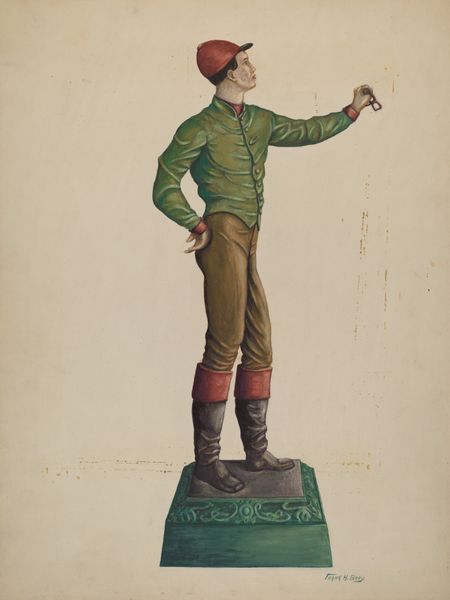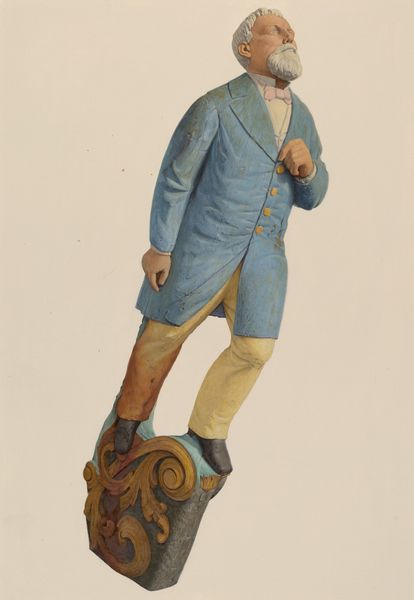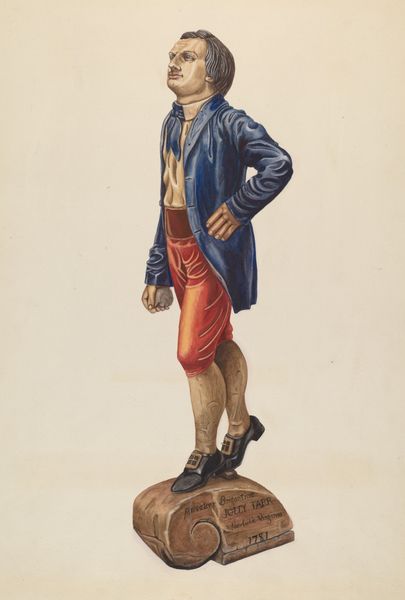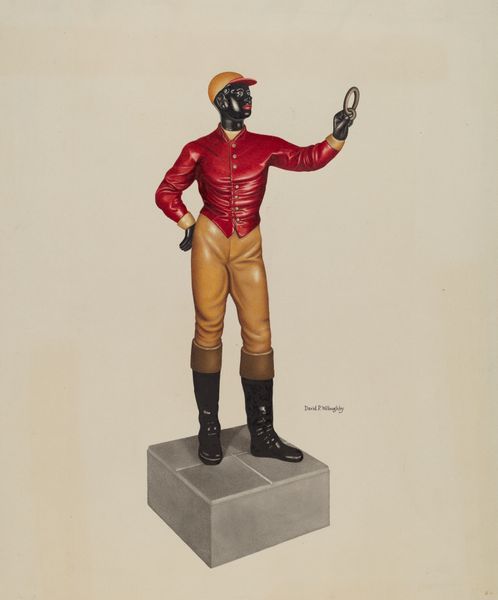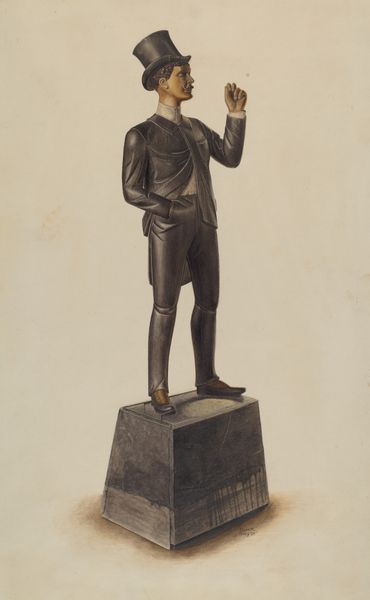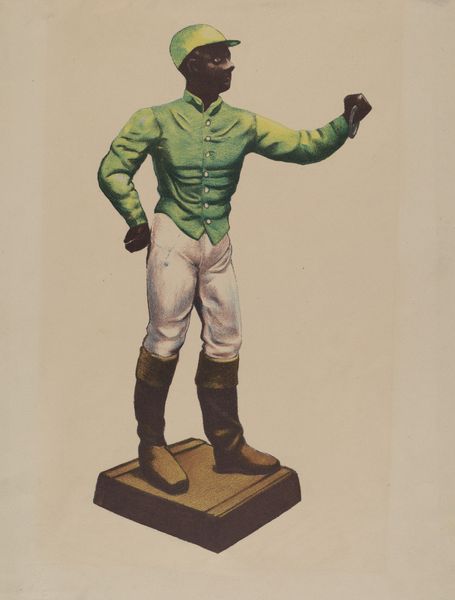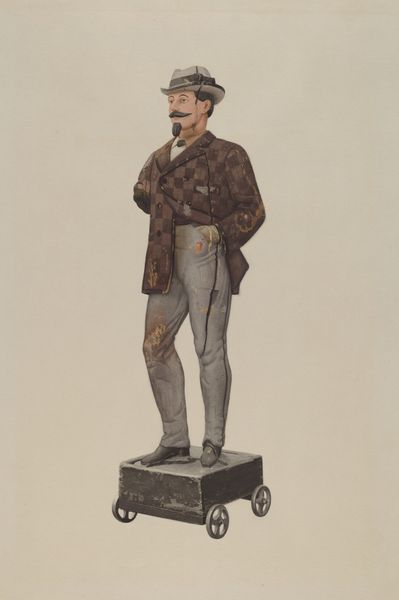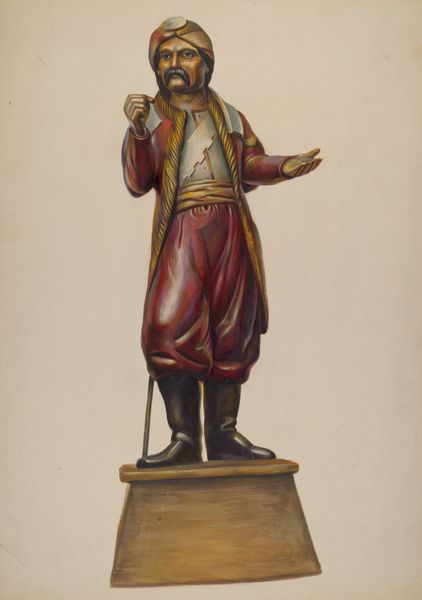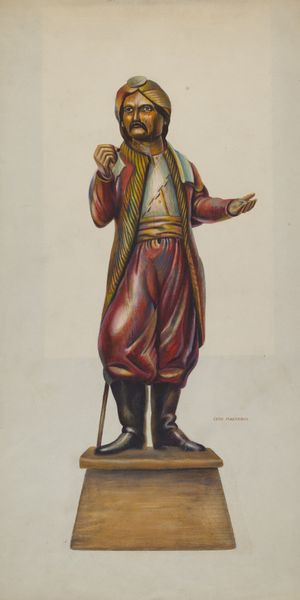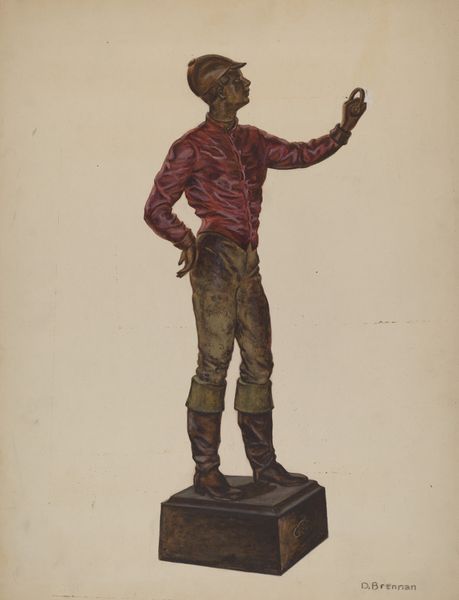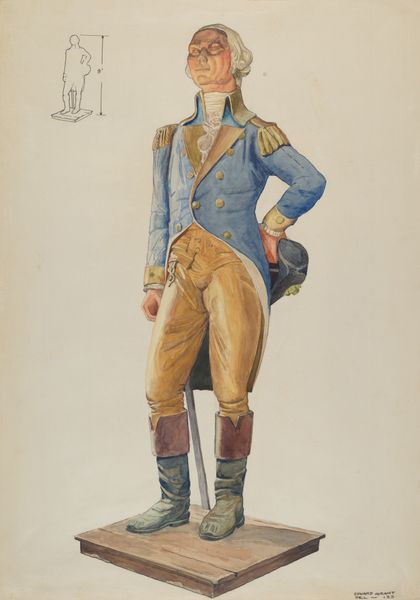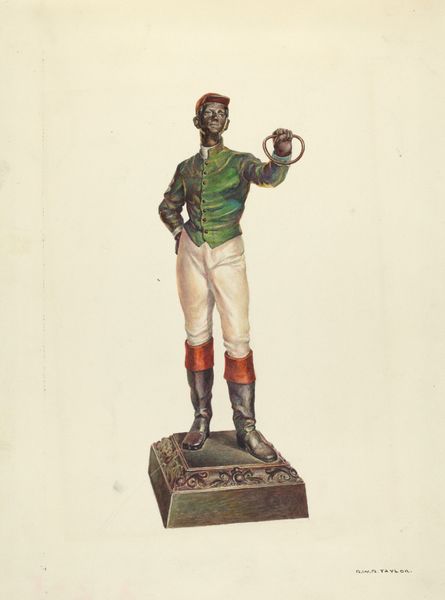
drawing, painting, watercolor
#
portrait
#
drawing
#
painting
#
charcoal drawing
#
figuration
#
watercolor
#
portrait drawing
#
modernism
#
realism
Dimensions: overall: 43.3 x 30.5 cm (17 1/16 x 12 in.)
Copyright: National Gallery of Art: CC0 1.0
Curator: I’m immediately drawn to the rigidity of the figure, a statue-like man staring off to the side with what looks like a riding crop in hand. Editor: This is "Hitching Post," a piece dating from 1935 to 1942 by an anonymous artist. The materials appear to include watercolor, drawing and painting - perhaps as mixed media to arrive at the image's dimensionality. It clearly aims to capture a distinct likeness, verging into portraiture. Curator: Likeness is one word, I find myself wondering more about what a Hitching Post has to do with equestrian sport, horse racing. How this jockey figure carries within it deeper significances of the era, not simply the aesthetic, but social commentaries, given the period, even psychological yearnings for freedom. What sort of idealized social and physical position is being presented here? Editor: Right, the image of the jockey, traditionally a symbol of prestige and aristocratic sports, also brings to the fore the socio-economic realities tied to that industry. Considering the socio-political environment in which it was produced, the figure’s stance might even symbolize aspiration, upward mobility, perhaps constrained within the pre-ordained tracks of a deeply hierarchical society. Curator: Perhaps the base upon which it stands, then, becomes all the more intriguing as a statement on physical, as much as a more social, confinement. Are we considering freedom here, or some idea of ordered chaos? Editor: And this question, "freedom versus chaos", makes me wonder: how are art institutions reflecting upon works like this today? How are galleries grappling with historical blind spots when featuring anonymous art created under potentially problematic circumstances? Do museums have a responsibility to illuminate the historical and ethical context when exhibiting art with potentially troublesome connections to class division, to offer alternative narratives that speak to inclusivity and justice? Curator: That’s an excellent perspective. The way museums contextualize art fundamentally impacts public understanding and its enduring symbolic influence. This piece offers many paths for discussion on power, perception, and historical representation. Editor: Indeed. Ultimately, our engagement with it evolves beyond just observing skill. This has prompted important reflection.
Comments
No comments
Be the first to comment and join the conversation on the ultimate creative platform.
